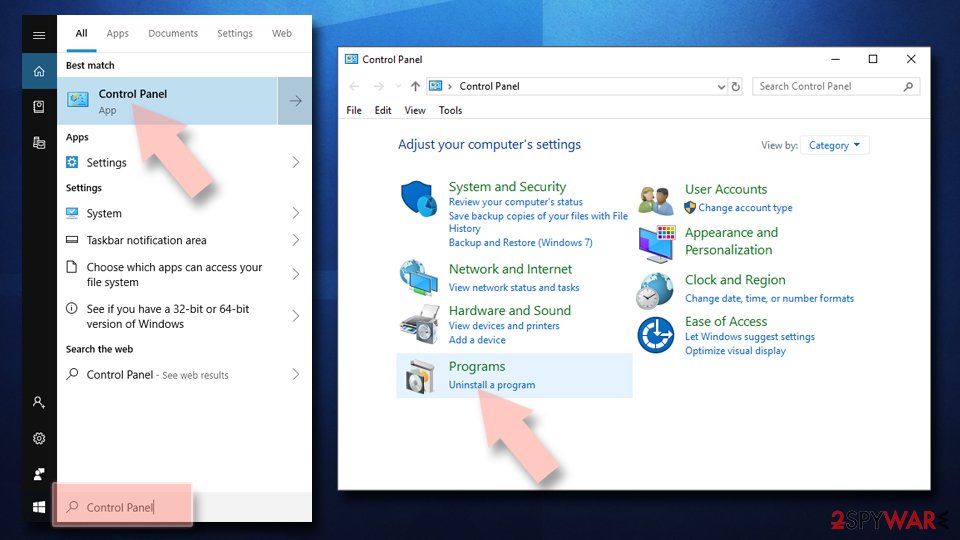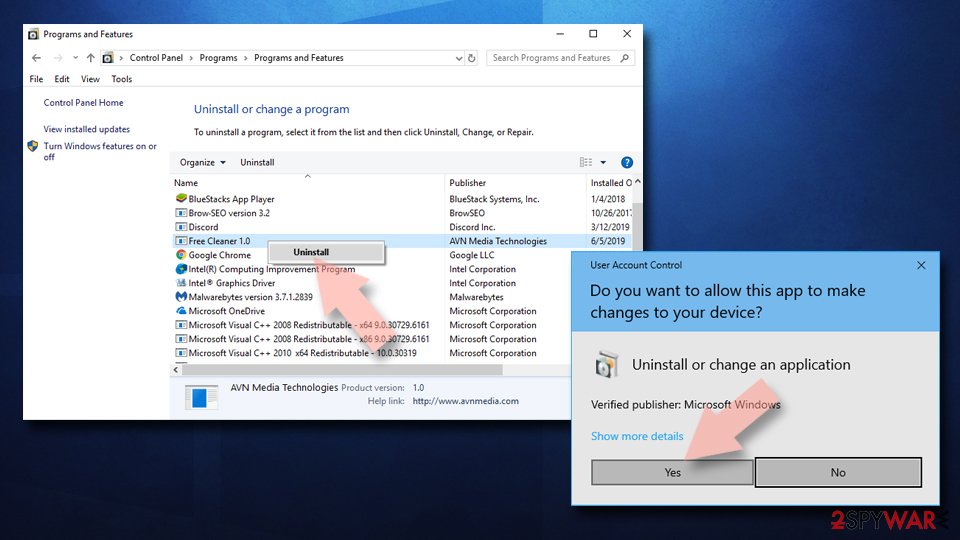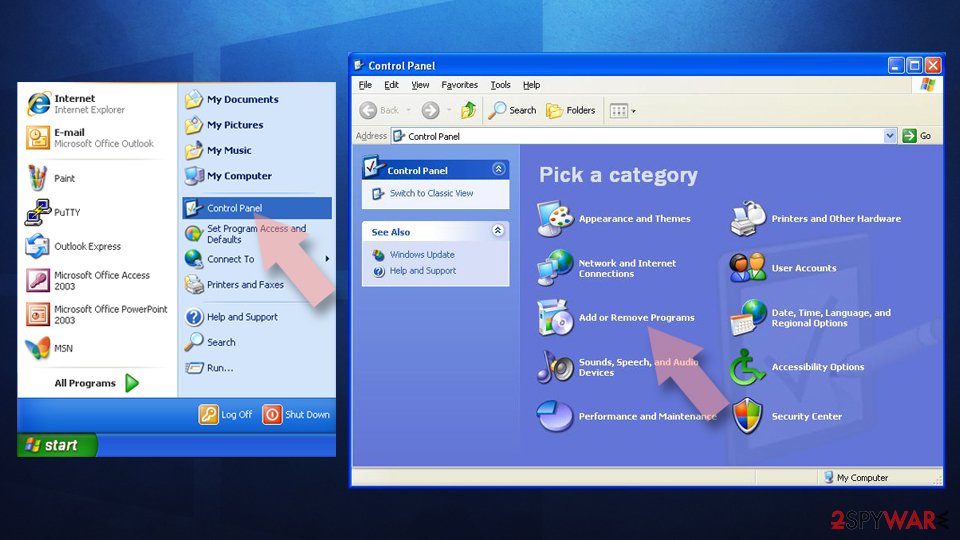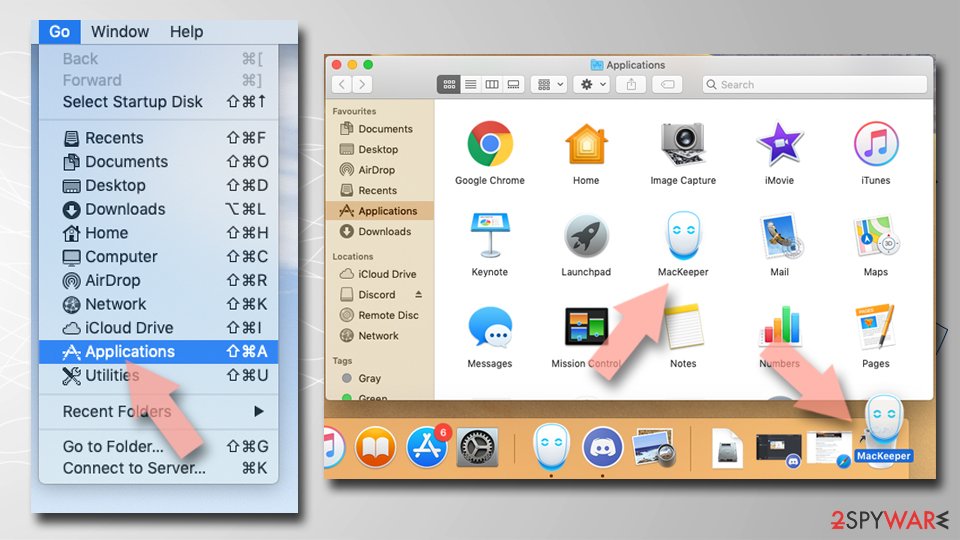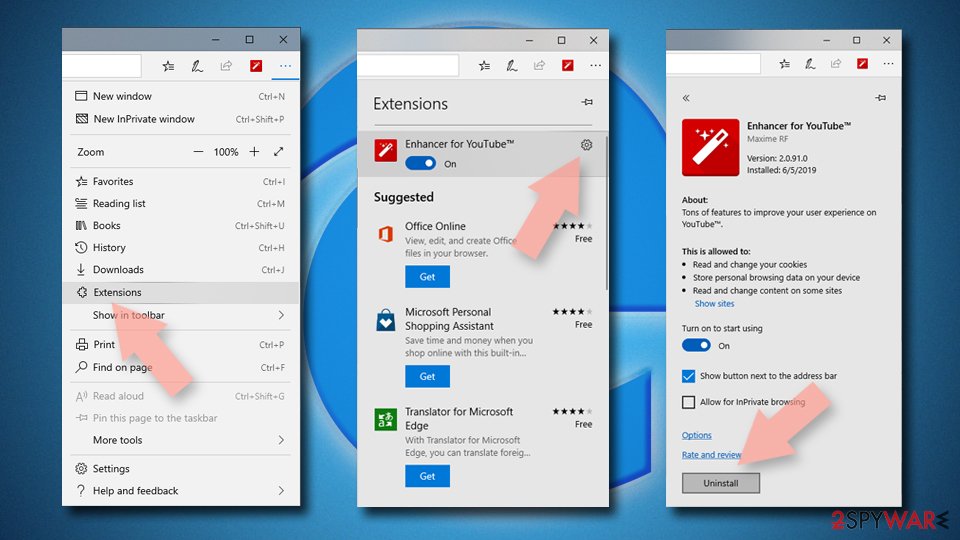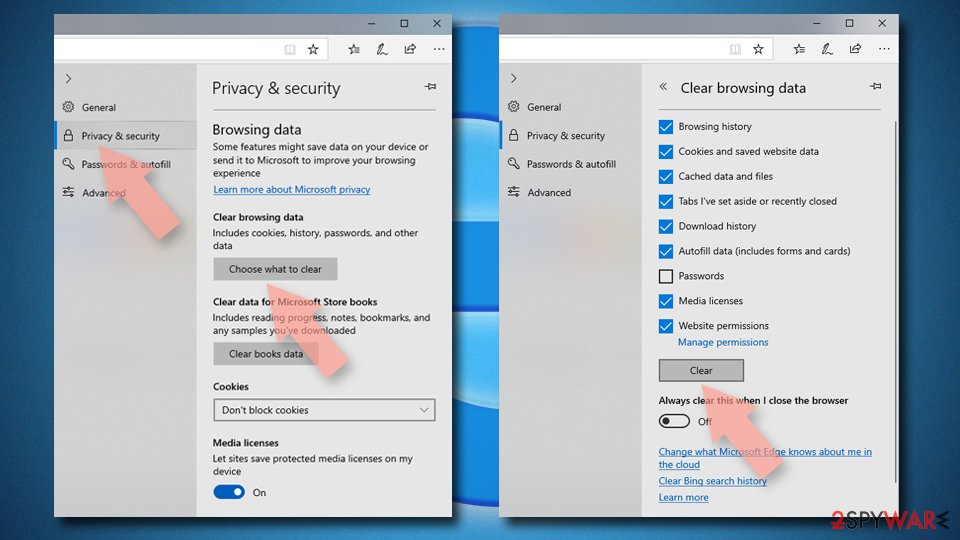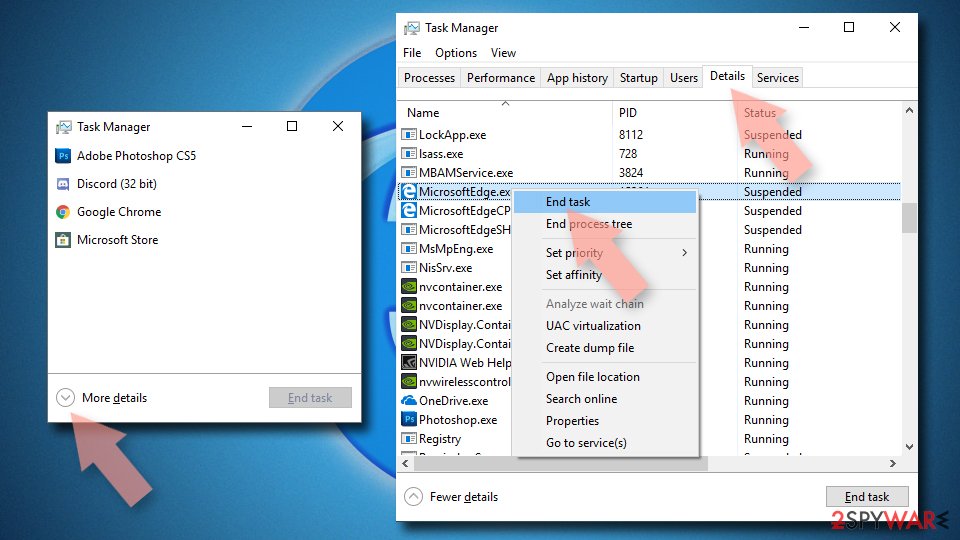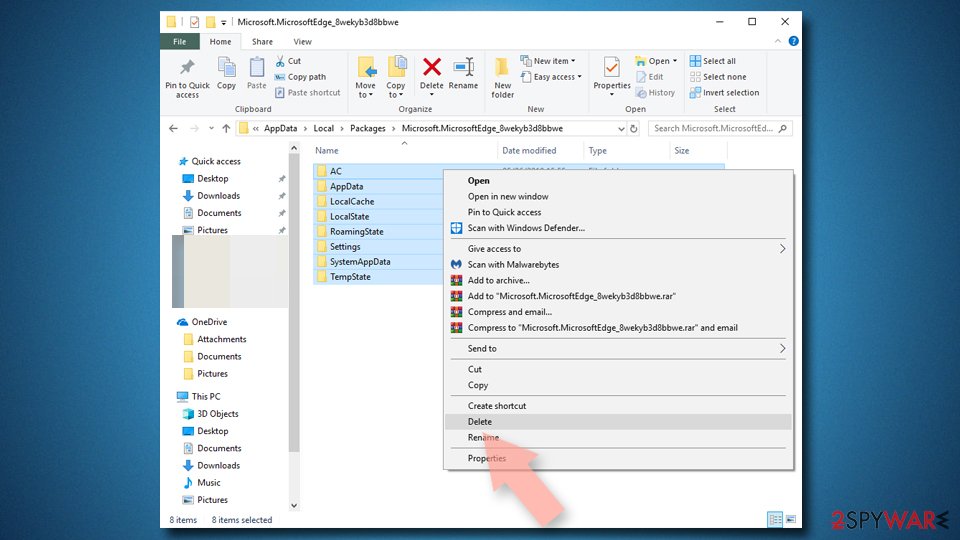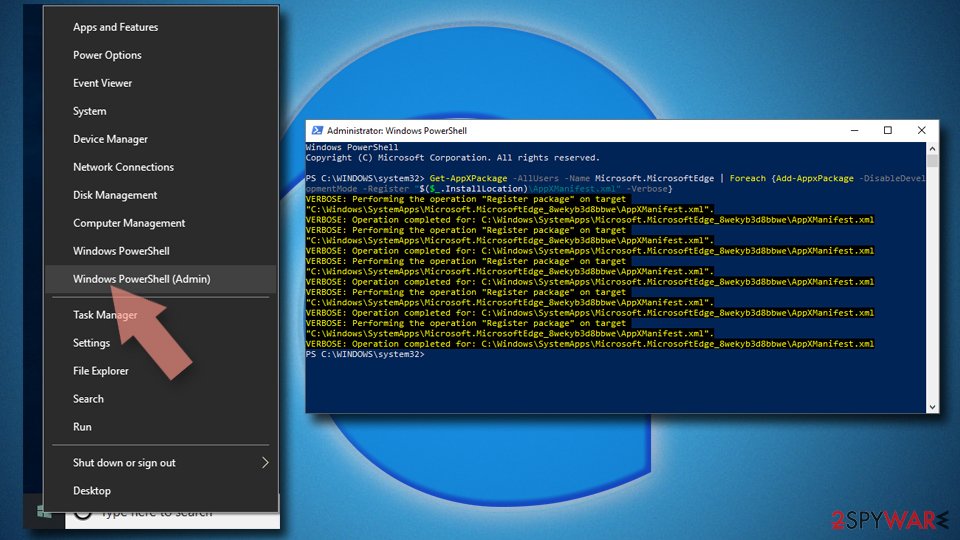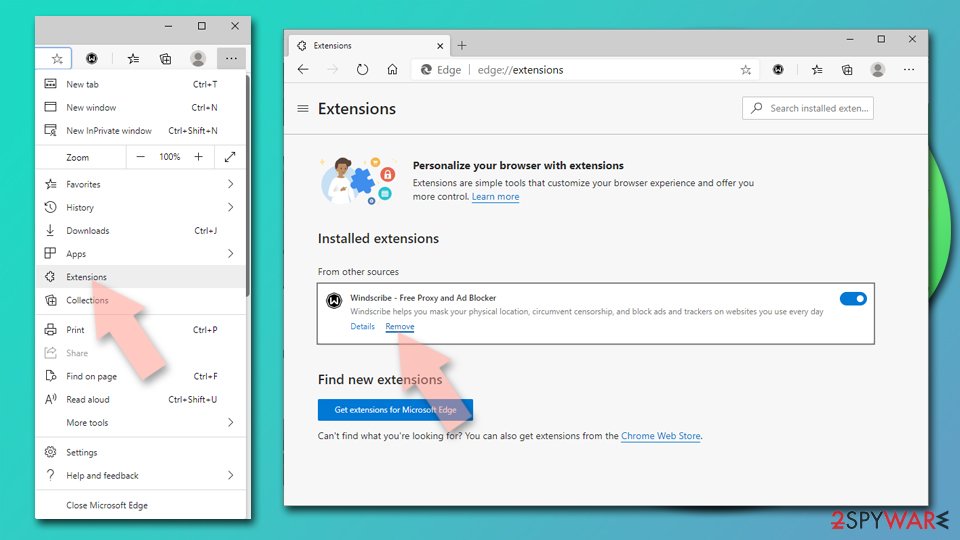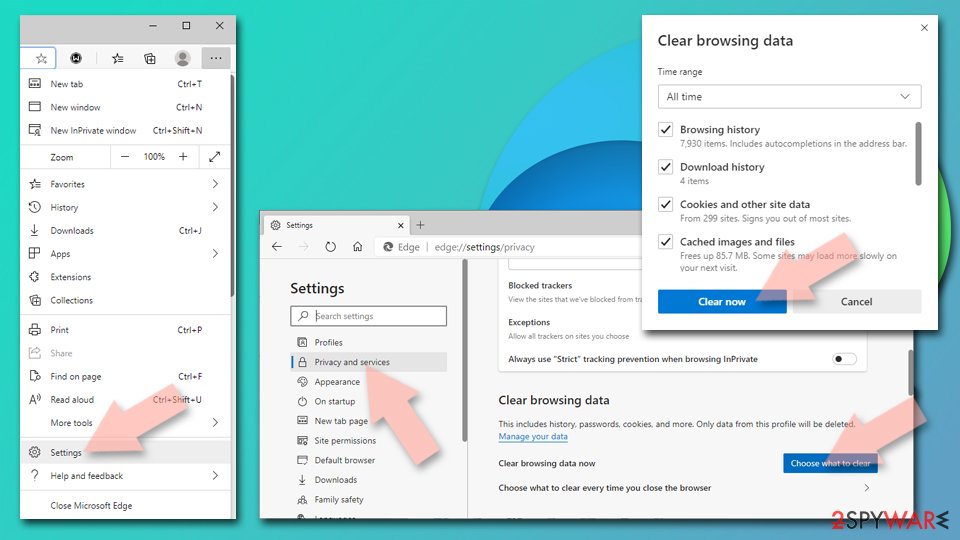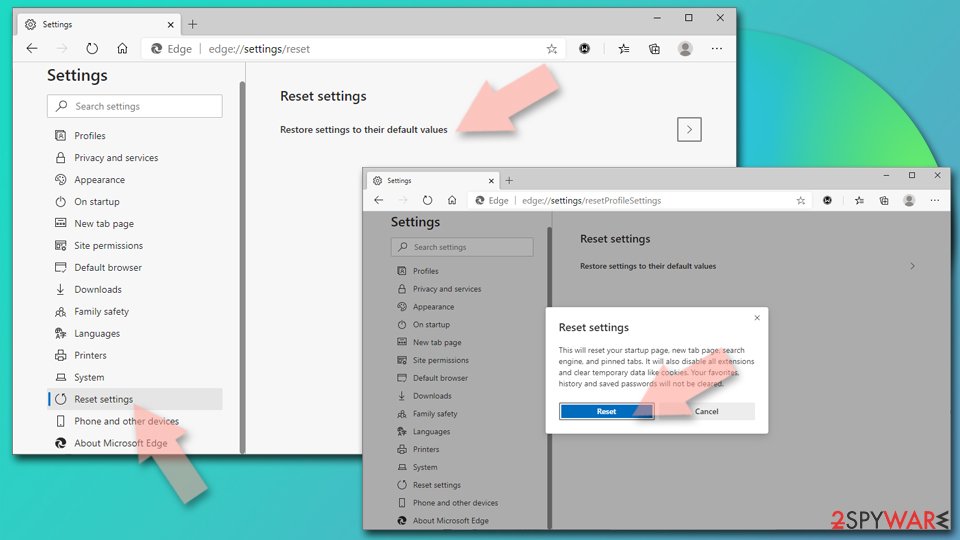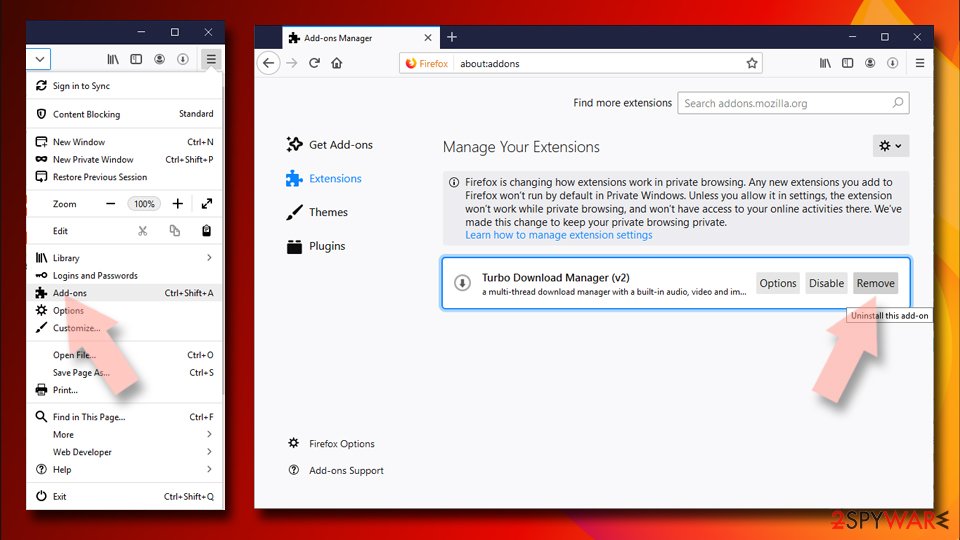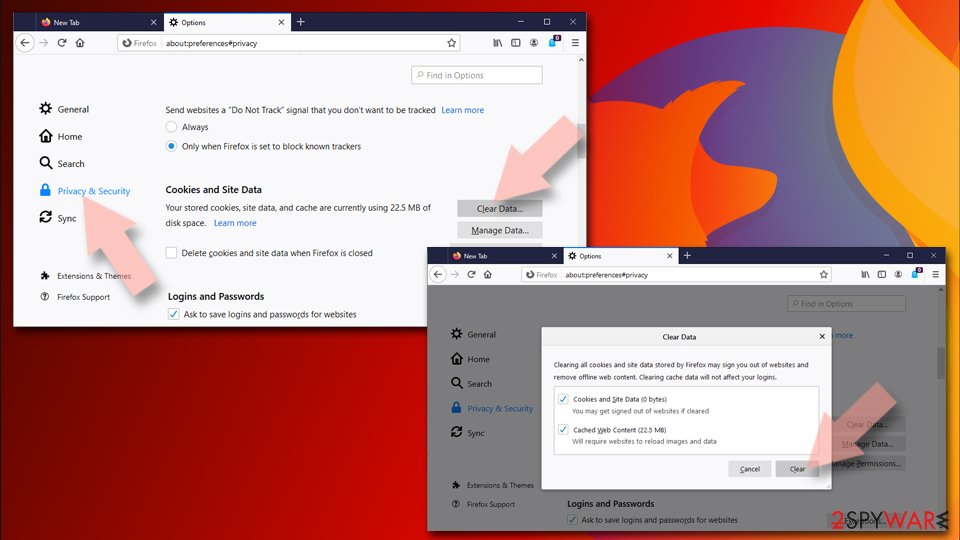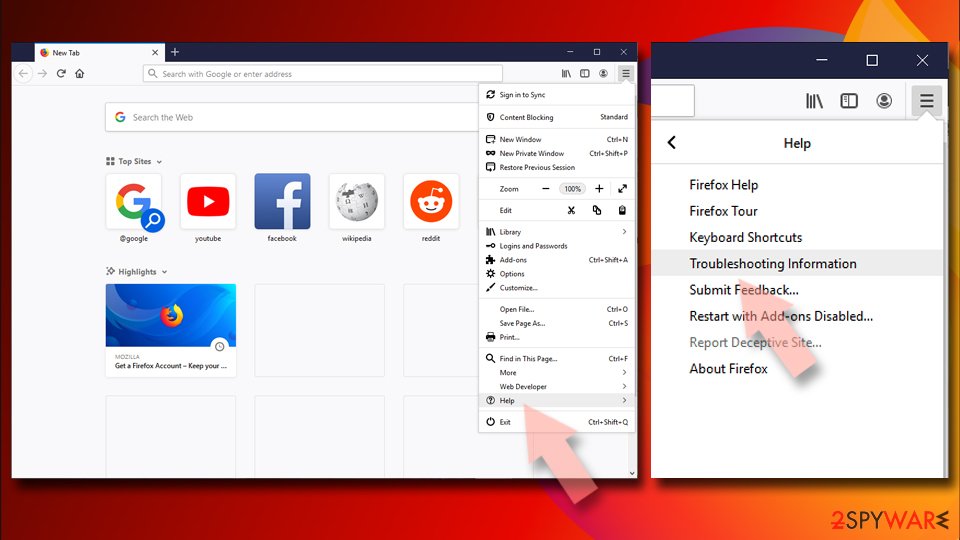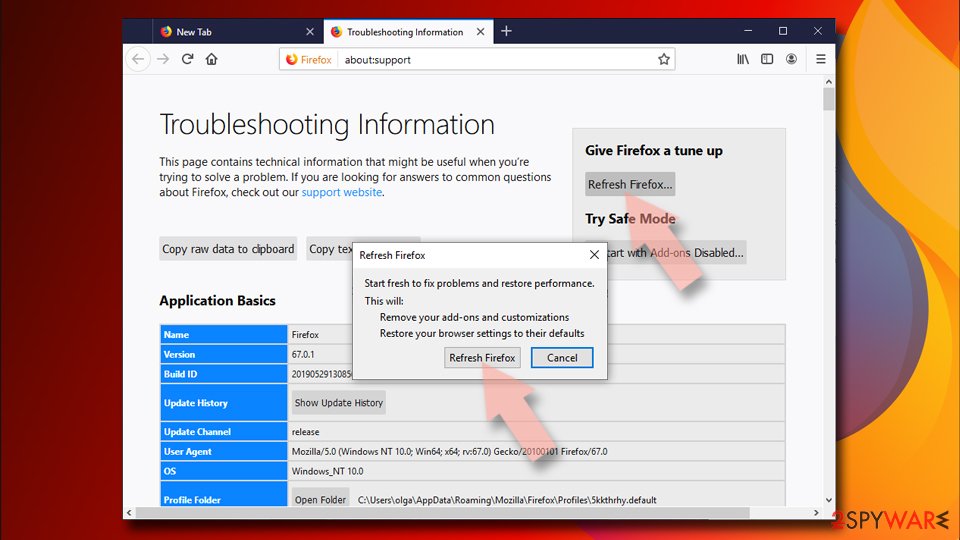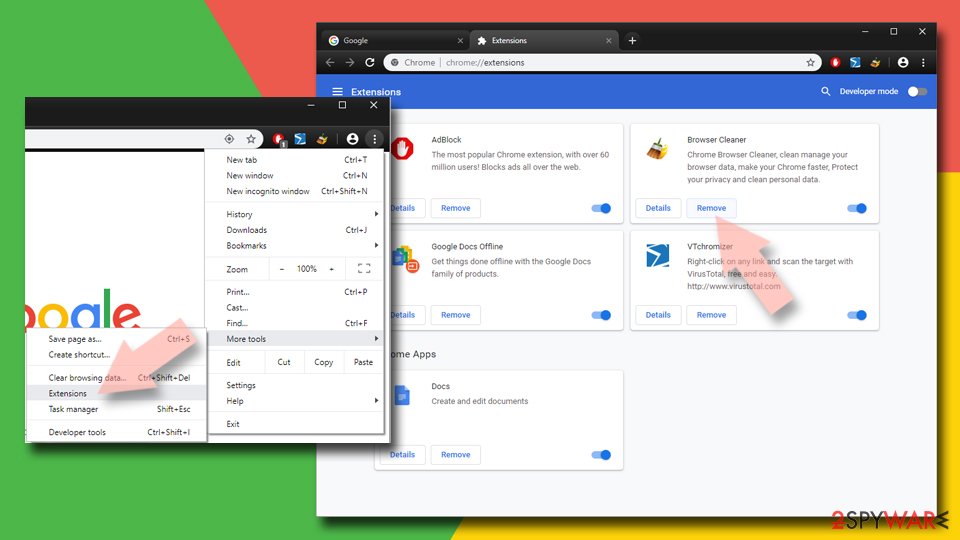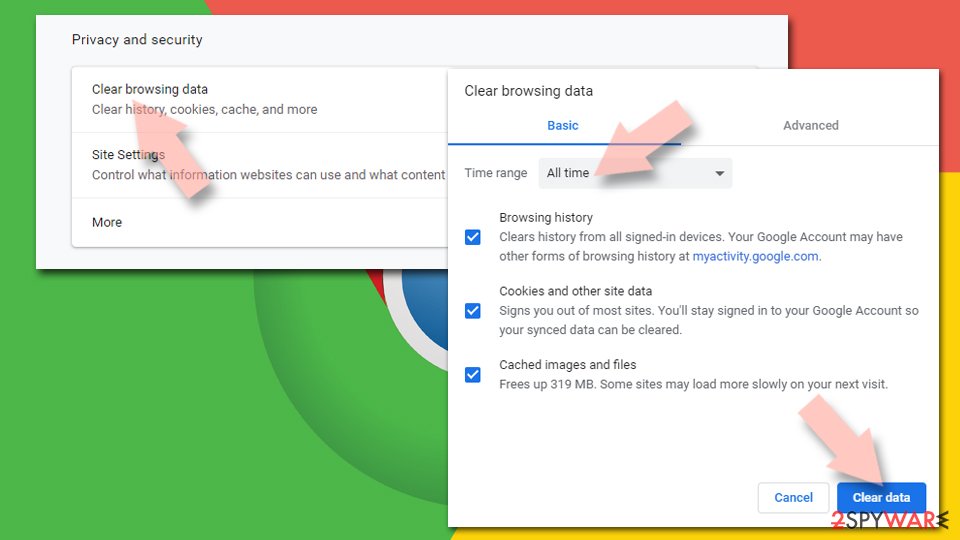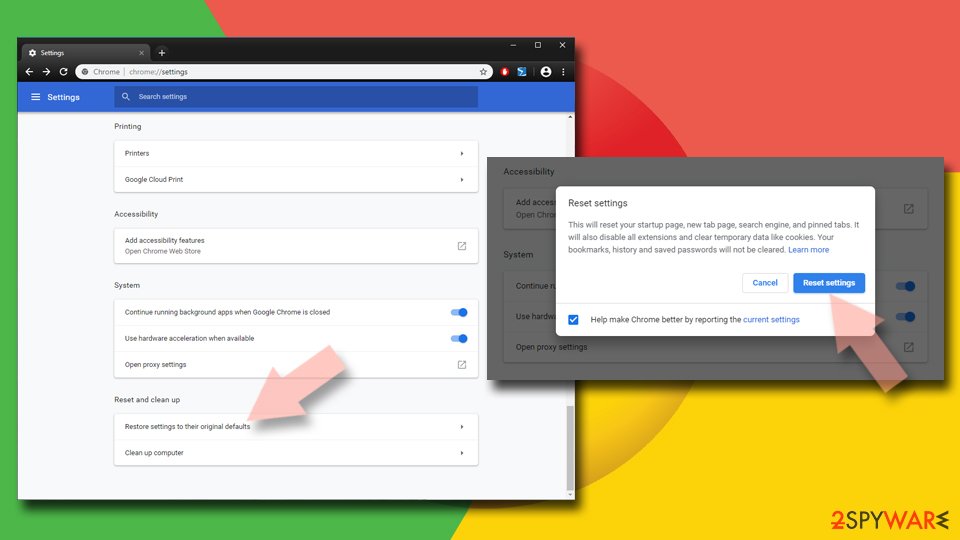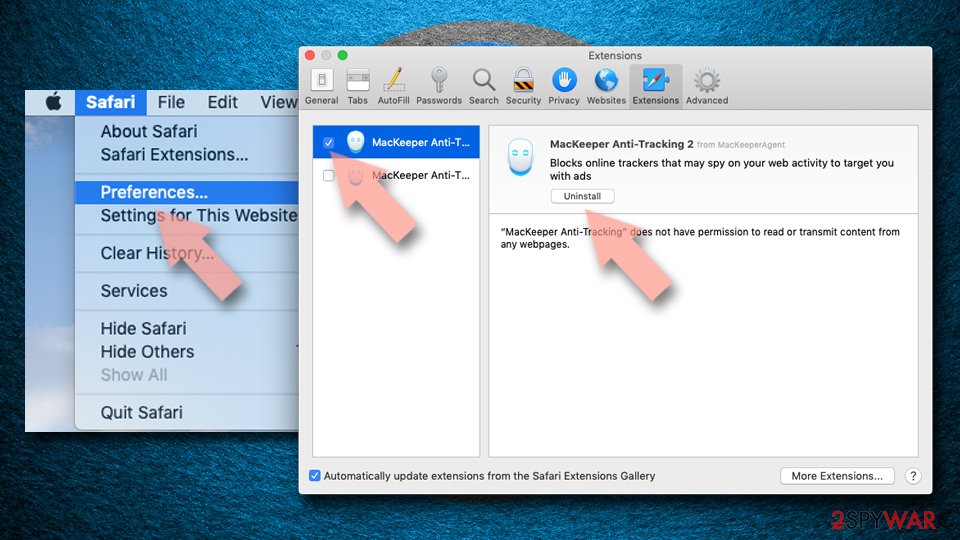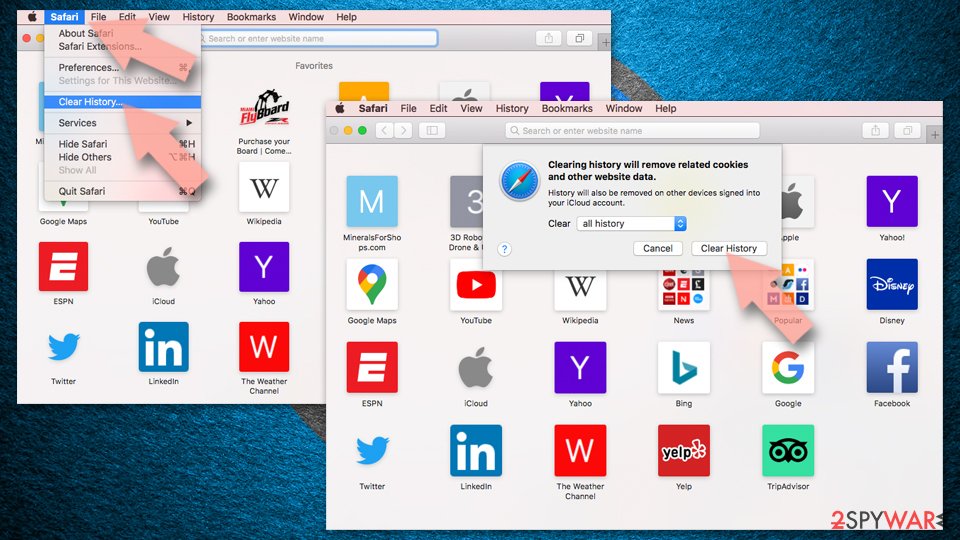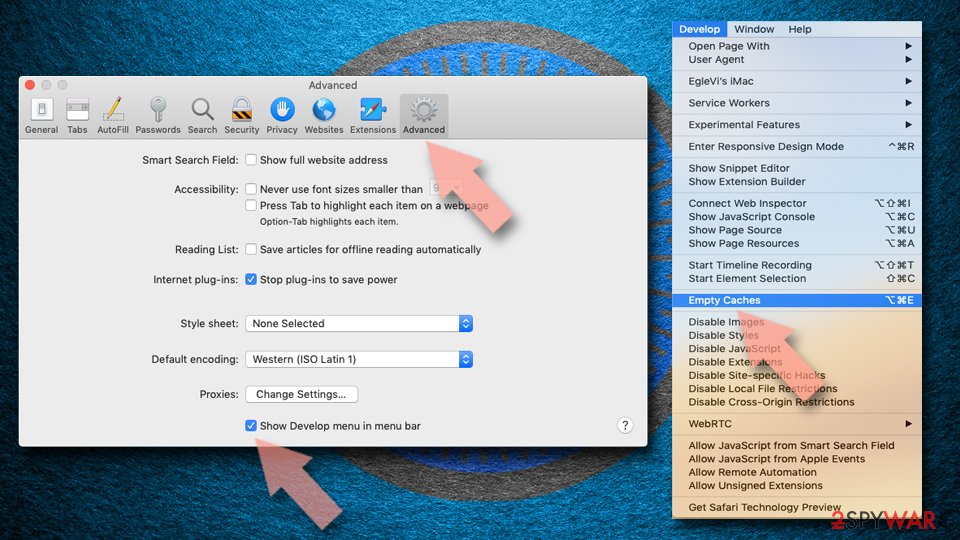Findwhatever (Removal Guide) - updated Aug 2018
Findwhatever Removal Guide
What is Findwhatever?
FindWhatever – a dubious application that spams Google Chrome, Internet Explorer and other browsers with invasive advertisements

FindWhatever is an adware[1] application that typically infiltrates users' machines using software bundling and tracks users' non-personally identifiable information. Although not considered to be malware, these dubious programs can cause havoc on the computer. Upon invasion, the PUP changes browser settings immediately and starts displaying pop-ups, deals, banners, coupons, in-text links and other adverts. Users can be brought to sponsored content via redirects as well. Additionally, the PUP is flagged by multiple AV engines, and that's why many users refer to it as FindWhatever virus.
| Summary | |
| Name | FindWhatever |
| Type | Adware |
| Infiltration | Software bundling, advertisement banners |
| Affected browsers | Google Chrome, Internet Explorer, Mozilla Firefox, etc. |
| Symptoms | Intrusive ads, redirects, sponsored links, etc. |
| Detection and elimination | use FortectIntego |
FindWhatever does not infiltrate systems using its own means, unlike most malware does. For example, most ransomware or trojans use intrusive techniques like spam emails, password brute-forcing, software vulnerabilities and similar. However, for adware installation, users' intervention is required, and that is where software bundling comes in.
Although adware is not the same as malware, keeping FindWhatever on your computer is unsafe, to say the least. Several modifications to your system are made:
- several tasks can be running in the background
- your homepage, new tab and search engine can be altered
- additional components (toolbars, add-ons, browser extensions, etc.) can be installed without consent
- intrusive advertisements pop-up on all pages visited
- redirects lead to phishing, scam and other questionable websites
It goes without saying that such activity on your computer can eventually lead to malware infiltration. If unlucky, you could be redirected to a page where malicious JavaScript[2] can install malware on your computer automatically. Therefore, if you have been redirected to the dubious site, close down your browser and proceed with FindWhatever removal procedure.
To add to all that, FindWhatever virus also tracks its users. That means that information like IP address, apps installed, bookmarks, search queries, sites visited, links clicked, and similar data is carefully collected and shared with third-parties for marketing purposes. FindWhatever authors generate revenue whenever sponsors' products or services are bought.
All in all, if you value your privacy and do not want malicious programs to be installed on your PC, remove FindWhatever ASAP. We suggest using FortectIntego security software for a quick solution.

Avoid Recommended installation settings
If you want to avoid unwanted programs on your computer, you should pay attention to your internet browsing habits, as well as program installation procedure, experts[3] recommend. Software bundling is a deceptive technique and users are often tricked into installing additional components apart from their desired application without notice.
Freeware and shareware developers often hide adware and other PUPs in Advanced or Custom installation settings. Because users often rush the procedure, they do not bother with this settings and pick Recommended or Quick mode. That is the biggest mistake, as users can usually see optional installs only if they select Advanced mode.
Thus, carefully read through the installation instructions and never use Recommended settings if you want to avoid annoying applications like adware.
Remove FindWhatever from your device in two different ways
FindWhatever removal might be either smooth or complicated. First of all, it depends on how long the application has been lurking on your computer. If the dubious app was able to perform its activities for a while, it is highly likely that you have other unwanted apps installed, which might not be easy to identify. For that reason, we recommend using security software. Simply download one of the programs offered below and perform a full system scan.
Alternatively, if you are an advanced computer user, you can also remove FindWhatever virus manually. We prepared instructions that you can use for the procedure. However, make sure that you make no mistakes while following it, as incorrect elimination might result in removal failure.
You may remove virus damage with a help of FortectIntego. SpyHunter 5Combo Cleaner and Malwarebytes are recommended to detect potentially unwanted programs and viruses with all their files and registry entries that are related to them.
Getting rid of Findwhatever. Follow these steps
Uninstall from Windows
To eliminate FindWhatever from Windows OS, follow these steps:
Instructions for Windows 10/8 machines:
- Enter Control Panel into Windows search box and hit Enter or click on the search result.
- Under Programs, select Uninstall a program.

- From the list, find the entry of the suspicious program.
- Right-click on the application and select Uninstall.
- If User Account Control shows up, click Yes.
- Wait till uninstallation process is complete and click OK.

If you are Windows 7/XP user, proceed with the following instructions:
- Click on Windows Start > Control Panel located on the right pane (if you are Windows XP user, click on Add/Remove Programs).
- In Control Panel, select Programs > Uninstall a program.

- Pick the unwanted application by clicking on it once.
- At the top, click Uninstall/Change.
- In the confirmation prompt, pick Yes.
- Click OK once the removal process is finished.
Delete from macOS
Remove items from Applications folder:
- From the menu bar, select Go > Applications.
- In the Applications folder, look for all related entries.
- Click on the app and drag it to Trash (or right-click and pick Move to Trash)

To fully remove an unwanted app, you need to access Application Support, LaunchAgents, and LaunchDaemons folders and delete relevant files:
- Select Go > Go to Folder.
- Enter /Library/Application Support and click Go or press Enter.
- In the Application Support folder, look for any dubious entries and then delete them.
- Now enter /Library/LaunchAgents and /Library/LaunchDaemons folders the same way and terminate all the related .plist files.

Remove from Microsoft Edge
Delete unwanted extensions from MS Edge:
- Select Menu (three horizontal dots at the top-right of the browser window) and pick Extensions.
- From the list, pick the extension and click on the Gear icon.
- Click on Uninstall at the bottom.

Clear cookies and other browser data:
- Click on the Menu (three horizontal dots at the top-right of the browser window) and select Privacy & security.
- Under Clear browsing data, pick Choose what to clear.
- Select everything (apart from passwords, although you might want to include Media licenses as well, if applicable) and click on Clear.

Restore new tab and homepage settings:
- Click the menu icon and choose Settings.
- Then find On startup section.
- Click Disable if you found any suspicious domain.
Reset MS Edge if the above steps did not work:
- Press on Ctrl + Shift + Esc to open Task Manager.
- Click on More details arrow at the bottom of the window.
- Select Details tab.
- Now scroll down and locate every entry with Microsoft Edge name in it. Right-click on each of them and select End Task to stop MS Edge from running.

If this solution failed to help you, you need to use an advanced Edge reset method. Note that you need to backup your data before proceeding.
- Find the following folder on your computer: C:\\Users\\%username%\\AppData\\Local\\Packages\\Microsoft.MicrosoftEdge_8wekyb3d8bbwe.
- Press Ctrl + A on your keyboard to select all folders.
- Right-click on them and pick Delete

- Now right-click on the Start button and pick Windows PowerShell (Admin).
- When the new window opens, copy and paste the following command, and then press Enter:
Get-AppXPackage -AllUsers -Name Microsoft.MicrosoftEdge | Foreach {Add-AppxPackage -DisableDevelopmentMode -Register “$($_.InstallLocation)\\AppXManifest.xml” -Verbose

Instructions for Chromium-based Edge
Delete extensions from MS Edge (Chromium):
- Open Edge and click select Settings > Extensions.
- Delete unwanted extensions by clicking Remove.

Clear cache and site data:
- Click on Menu and go to Settings.
- Select Privacy, search and services.
- Under Clear browsing data, pick Choose what to clear.
- Under Time range, pick All time.
- Select Clear now.

Reset Chromium-based MS Edge:
- Click on Menu and select Settings.
- On the left side, pick Reset settings.
- Select Restore settings to their default values.
- Confirm with Reset.

Remove from Mozilla Firefox (FF)
Remove dangerous extensions:
- Open Mozilla Firefox browser and click on the Menu (three horizontal lines at the top-right of the window).
- Select Add-ons.
- In here, select unwanted plugin and click Remove.

Reset the homepage:
- Click three horizontal lines at the top right corner to open the menu.
- Choose Options.
- Under Home options, enter your preferred site that will open every time you newly open the Mozilla Firefox.
Clear cookies and site data:
- Click Menu and pick Settings.
- Go to Privacy & Security section.
- Scroll down to locate Cookies and Site Data.
- Click on Clear Data…
- Select Cookies and Site Data, as well as Cached Web Content and press Clear.

Reset Mozilla Firefox
If clearing the browser as explained above did not help, reset Mozilla Firefox:
- Open Mozilla Firefox browser and click the Menu.
- Go to Help and then choose Troubleshooting Information.

- Under Give Firefox a tune up section, click on Refresh Firefox…
- Once the pop-up shows up, confirm the action by pressing on Refresh Firefox.

Remove from Google Chrome
Delete malicious extensions from Google Chrome:
- Open Google Chrome, click on the Menu (three vertical dots at the top-right corner) and select More tools > Extensions.
- In the newly opened window, you will see all the installed extensions. Uninstall all the suspicious plugins that might be related to the unwanted program by clicking Remove.

Clear cache and web data from Chrome:
- Click on Menu and pick Settings.
- Under Privacy and security, select Clear browsing data.
- Select Browsing history, Cookies and other site data, as well as Cached images and files.
- Click Clear data.

Change your homepage:
- Click menu and choose Settings.
- Look for a suspicious site in the On startup section.
- Click on Open a specific or set of pages and click on three dots to find the Remove option.
Reset Google Chrome:
If the previous methods did not help you, reset Google Chrome to eliminate all the unwanted components:
- Click on Menu and select Settings.
- In the Settings, scroll down and click Advanced.
- Scroll down and locate Reset and clean up section.
- Now click Restore settings to their original defaults.
- Confirm with Reset settings.

Delete from Safari
Remove unwanted extensions from Safari:
- Click Safari > Preferences…
- In the new window, pick Extensions.
- Select the unwanted extension and select Uninstall.

Clear cookies and other website data from Safari:
- Click Safari > Clear History…
- From the drop-down menu under Clear, pick all history.
- Confirm with Clear History.

Reset Safari if the above-mentioned steps did not help you:
- Click Safari > Preferences…
- Go to Advanced tab.
- Tick the Show Develop menu in menu bar.
- From the menu bar, click Develop, and then select Empty Caches.

After uninstalling this potentially unwanted program (PUP) and fixing each of your web browsers, we recommend you to scan your PC system with a reputable anti-spyware. This will help you to get rid of Findwhatever registry traces and will also identify related parasites or possible malware infections on your computer. For that you can use our top-rated malware remover: FortectIntego, SpyHunter 5Combo Cleaner or Malwarebytes.
How to prevent from getting adware
Protect your privacy – employ a VPN
There are several ways how to make your online time more private – you can access an incognito tab. However, there is no secret that even in this mode, you are tracked for advertising purposes. There is a way to add an extra layer of protection and create a completely anonymous web browsing practice with the help of Private Internet Access VPN. This software reroutes traffic through different servers, thus leaving your IP address and geolocation in disguise. Besides, it is based on a strict no-log policy, meaning that no data will be recorded, leaked, and available for both first and third parties. The combination of a secure web browser and Private Internet Access VPN will let you browse the Internet without a feeling of being spied or targeted by criminals.
No backups? No problem. Use a data recovery tool
If you wonder how data loss can occur, you should not look any further for answers – human errors, malware attacks, hardware failures, power cuts, natural disasters, or even simple negligence. In some cases, lost files are extremely important, and many straight out panic when such an unfortunate course of events happen. Due to this, you should always ensure that you prepare proper data backups on a regular basis.
If you were caught by surprise and did not have any backups to restore your files from, not everything is lost. Data Recovery Pro is one of the leading file recovery solutions you can find on the market – it is likely to restore even lost emails or data located on an external device.
- ^ Adware. Trend Micro. Security team.
- ^ ANDRA ZAHARIA. JavaScript Malware – a Growing Trend Explained for Everyday Users. Heimdal Security. Cybersecurity researchers.
- ^ SenzaVirus. SenzaVirus. Italian cybersecurity news.
